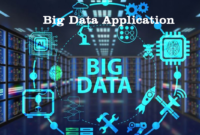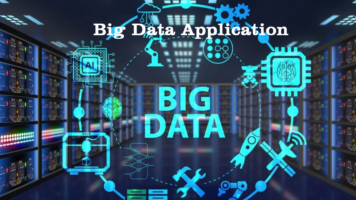Big data has become an essential part of modern businesses, providing organizations with a wealth of data that can be used to gain insights into their operations, customers, and markets. In this article, we will explore some of the most popular applications of big data. 
predictive Analytics
Predictive analytics is one of the most popular applications of big data. Predictive analytics involves the use of statistical algorithms and machine learning techniques to analyze historical data and make predictions about future events or trends. Predictive analytics can be used in a range of applications, including financial forecasting, supply chain management, and customer analytics. For example, a retailer may use predictive analytics to forecast demand for products and optimize inventory levels, while a financial institution may use predictive analytics to detect fraud and assess credit risk.
Healthcare Analytics
Healthcare is another area where big data is being increasingly used to drive insights and improve patient outcomes. Healthcare analytics involves the use of big data to analyze clinical data, patient data, and administrative data to identify patterns, trends, and insights that can be used to improve patient care. One of the key applications of healthcare analytics is in personalized medicine. Personalized medicine involves tailoring medical treatments to the specific needs of individual patients based on their genetic makeup, medical history, and other factors. Healthcare analytics can be used to analyze patient data and identify personalized treatment options, leading to better outcomes for patients.
Marketing Analytics
Marketing is another area where big data is being increasingly used to drive insights and improve marketing effectiveness. Marketing analytics involves the use of big data to analyze customer data, social media data, and other data sources to identify patterns, trends, and insights that can be used to improve marketing effectiveness. One of the key applications of marketing analytics is in customer segmentation. Customer segmentation involves dividing customers into groups based on common characteristics such as demographics, behavior, and preferences. Marketing analytics can be used to analyze customer data and identify segments with similar characteristics, allowing organizations to target their marketing efforts more effectively.
Cybersecurity Analytics
Cybersecurity is another area where big data is being increasingly used to improve security and reduce risk. Cybersecurity analytics involves the use of big data to analyze security logs, network traffic, and other data sources to identify potential threats and vulnerabilities. One of the key applications of cybersecurity analytics is in threat detection. Threat detection involves analyzing security logs and network traffic to identify potential threats such as malware, phishing attacks, and other types of cyber attacks. Cybersecurity analytics can be used to analyze large volumes of data in real-time, allowing organizations to detect and respond to threats quickly.
Fraud Detection
Fraud detection is another application of big data that is being increasingly used by businesses and financial institutions. Fraud detection involves the use of big data to analyze transaction data, customer data, and other data sources to identify patterns and anomalies that may indicate fraudulent activity. One of the key applications of fraud detection is in credit card fraud. Credit card fraud involves the use of stolen credit card information to make unauthorized purchases. Fraud detection algorithms can be used to analyze transaction data and identify patterns and anomalies that may indicate fraudulent activity, allowing financial institutions to prevent losses and protect their customers.
Supply Chain Analytics
Supply chain management is another area where big data is being increasingly used to drive insights and improve efficiency. Supply chain analytics involves the use of big data to analyze supply chain data, including inventory levels, production schedules, and shipping data, to identify patterns, trends, and insights that can be used to improve supply chain efficiency. One of the key applications of supply chain analytics is in demand forecasting. Demand forecasting involves predicting future demand for products based on historical sales data, market trends, and other factors. Supply chain analytics can be used to analyze demand data
